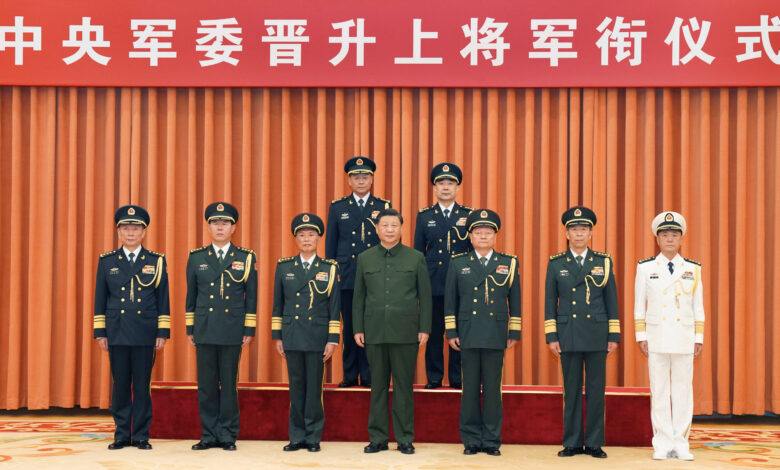Chinese military’s biggest shake up in 9 years, adds info, cyber and space units
The reorganised Information Support Force will now include the formerly part of the Strategic Support Force's aerospace and cyber divisions on an equal organisational footing

Chinese President Xi Jinping initiated new independent People’s Liberation Army units for information, space and cyber operations in its most significant restructuring of the country’s military since 2015.
China will disband the old Strategic Support Force, which was founded more than eight years ago to replace it with three new arms to improve capabilities in electronic, political, cyber, and space warfare, according to a report from The Economic Times. One of which, the Information Support Force will be responsible for gathering and analyzing information, building communication networks and protecting vital systems.
It “bears a great responsibility for advancing the military’s high level of development and winning a modern war,” Chinese President Xi Jinping said at an event Friday marking the creation of the Information Support Force.
The reorganised Information Support Force will now include the formerly part of the Strategic Support Force’s aerospace and cyber divisions on an equal organisational footing. According to the military ministry, the aerospace branch would handle crisis management in space and improve China’s space capabilities.
This strategic realignment takes place in the context of escalating international rivalry, especially with the US, where cyber warfare has taken the front stage. The US, UK, and New Zealand accused China last month of funding malevolent cyberattacks against democratic institutions, particularly in the Rocket Force. Proclaiming the Communist Party’s hegemony over the armed forces, Xi emphasised the new force’s function in coordinating the development of cyber information systems.
As a sign of his dedication to following Xi’s orders, Li Wei, the former political commissar of the now-dissolved Strategic Support Force, will continue to hold this role in the Information Support Force. The force’s top commander is Lt. Gen. Bi Yi, whose military career includes serving as deputy commander of the PLA Ground Force.
The military’s official newspaper, the People’s Liberation Army Daily, wrote in a commentary published Saturday that “modern warfare is a confrontation between systems” and “those who seize the information advantage take the initiative.”
Chinese Defence Ministry spokesman Wu Qian announced the reorganisation on Friday, stating that the cyberspace force was required to maintain information security, detect and counteract network intrusions, and strengthen national cyber border defences. According to Wu, China’s access to and utilisation of space will be enhanced by the aerospace force.
Xi had directed the military to bolster its presence in space and cyberspace in a speech in March, referring to these areas as “emerging areas of strategic capabilities.” The Central Military Commission, China’s highest military decision-making body, appears to have direct authority over the three new arms. Xi is the commission’s head.
By cutting the PLA’s roughly 2.3 million-strong force by 300,000, Xi’s 2015 major military reorganisation attempted to modernise the military. Along with creating the rocket branch and the Strategic Support Force, it reorganised the seven military regions into five theatre commands.
There have been claims of corruption in the former Strategic Support Force, according to a Hong Kong newspaper. According to media reports, former Defence Minister Li Shangfu, who vanished from public view in August 2023 and was fired from his position the following October, is believed to have engaged in misconduct about the development of equipment.
You might also be interested in – President Muizzu’s party secures super-majority, New era of Pro-China policy in Maldives



